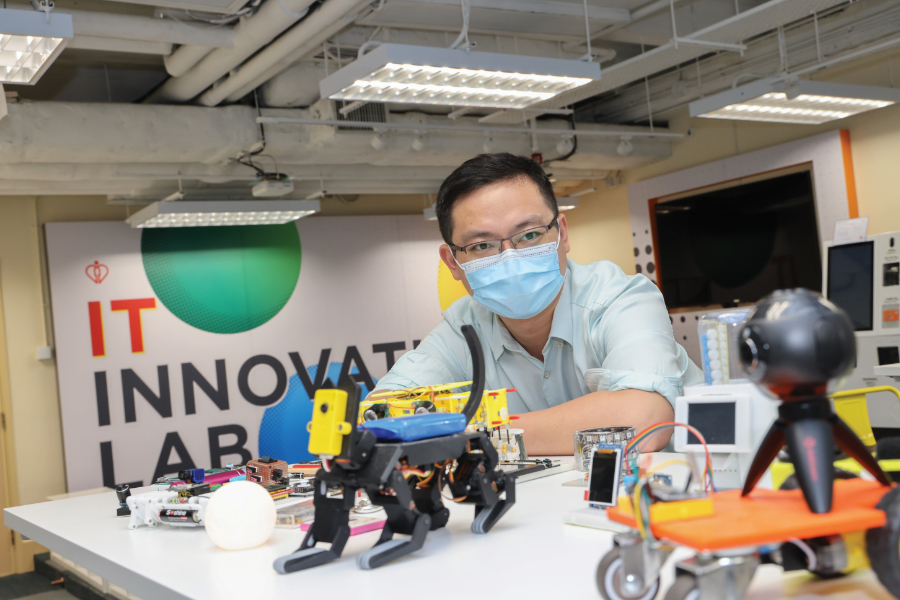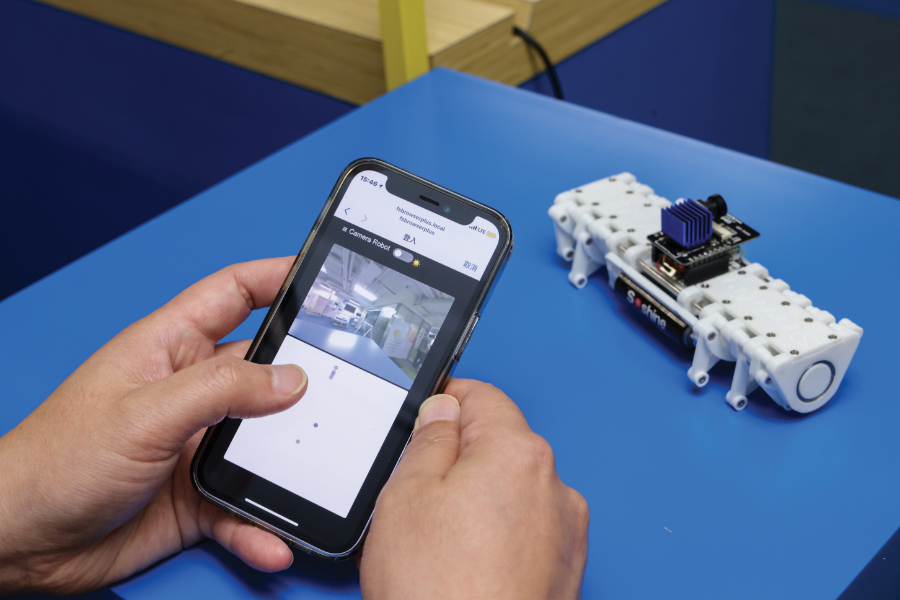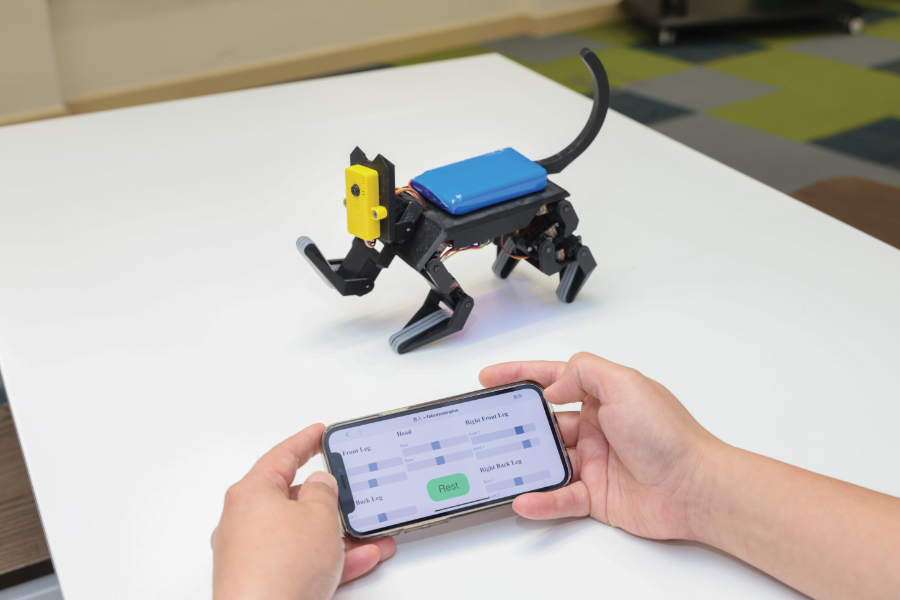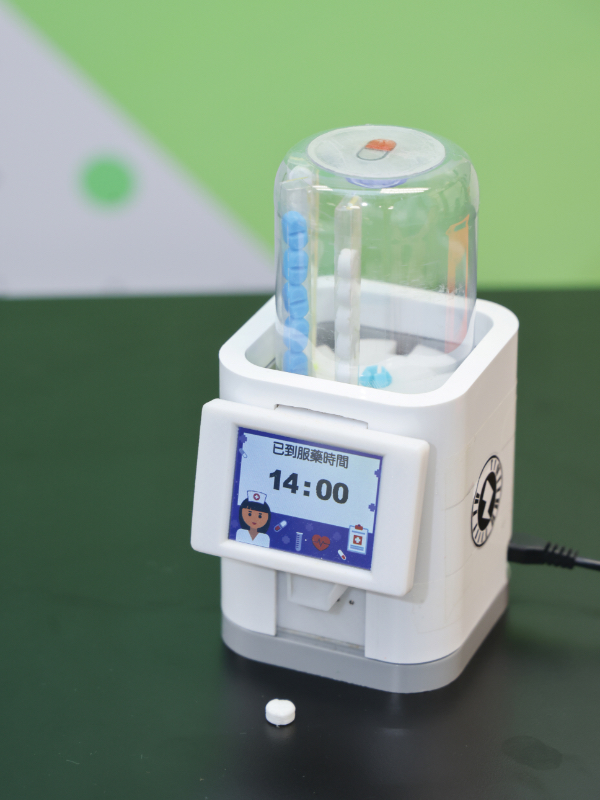DIY a smart life

Chan Leung, Analyst Programmer of Hospital Authority
(HA), loves DIY (Do It Yourself) since he was young. He made models learning from
magazines, and his passion in making models did not fade even he had grown up. He built
a robotic cat and included ‘smart’ elements in it. The creation process was long but he
enjoyed a lot.
Back in secondary school, Chan loved building models by following the imagery tutorial on the magazine ‘Science and Models’, which could be considered as the starting point for becoming a ‘maker’. According to Wikipedia, makers are people who love technology and are enthusiastic about putting things into practice. They are mainly interested in electronic gadgets, machinery and 3D printing etc., which are all Chan’s hobbies.
However, the first product made from scratch by Chan was actually a wallet, which was a folded transparent file. He considered that wallets were normally made by leather, which were heavier and thicker than notes and credit cards. Therefore, he came up with the idea of creating his own wallet and even shared a tutorial online with DIY lovers.
Being asked about the reason he fell in love with DIY, he says that he would always want to create those could not be found on the market by himself. His latest creation was a robotic cat. Although there were quite a lot of similar works, he wished to create one with joints similar to a real cat. So he decided to 3D print the body of a cat, and control its movements with a mobile device.
Chan points out that intellectual devices could be created through programming. “It is not that difficult to build a full manual device, but it cannot be fully-automated by AI (artificial intelligence). Hopefully, semi-automatic can be achieved by programming and AI at the current stage. And it is already quite satisfactory to lower manpower in operation.”
Six years ago, Chan joined the Geek Team promoting innovative technology. With other staff in the HA who shared the same interests with him, they give full scope to creativity using this platform. Chan believes that although creation could be imaginative, it could only be successful if they are inspired by user needs in real life. “Users know best what they need. It is the most ideal for us to bring ideas to life,” he explains. Mentioned in articles themed with Community Rehabilitation Service Support Centre on P16-19 of this issue, Virtual Reality technology has been using in the centre to assist patients in electric wheelchair in adapting to daily life. It was a demand raised by Allied Health colleagues and realised by the Geek Team.
Chan reveals that he is still exploring and many creations are to be further developed. He also highlights the importance of communication with people online, and thinking of another way when one failed. Anyhow, coming up with new ideas was already an excitement to him.
Back in secondary school, Chan loved building models by following the imagery tutorial on the magazine ‘Science and Models’, which could be considered as the starting point for becoming a ‘maker’. According to Wikipedia, makers are people who love technology and are enthusiastic about putting things into practice. They are mainly interested in electronic gadgets, machinery and 3D printing etc., which are all Chan’s hobbies.
However, the first product made from scratch by Chan was actually a wallet, which was a folded transparent file. He considered that wallets were normally made by leather, which were heavier and thicker than notes and credit cards. Therefore, he came up with the idea of creating his own wallet and even shared a tutorial online with DIY lovers.
Being asked about the reason he fell in love with DIY, he says that he would always want to create those could not be found on the market by himself. His latest creation was a robotic cat. Although there were quite a lot of similar works, he wished to create one with joints similar to a real cat. So he decided to 3D print the body of a cat, and control its movements with a mobile device.
Chan points out that intellectual devices could be created through programming. “It is not that difficult to build a full manual device, but it cannot be fully-automated by AI (artificial intelligence). Hopefully, semi-automatic can be achieved by programming and AI at the current stage. And it is already quite satisfactory to lower manpower in operation.”
Six years ago, Chan joined the Geek Team promoting innovative technology. With other staff in the HA who shared the same interests with him, they give full scope to creativity using this platform. Chan believes that although creation could be imaginative, it could only be successful if they are inspired by user needs in real life. “Users know best what they need. It is the most ideal for us to bring ideas to life,” he explains. Mentioned in articles themed with Community Rehabilitation Service Support Centre on P16-19 of this issue, Virtual Reality technology has been using in the centre to assist patients in electric wheelchair in adapting to daily life. It was a demand raised by Allied Health colleagues and realised by the Geek Team.
Chan reveals that he is still exploring and many creations are to be further developed. He also highlights the importance of communication with people online, and thinking of another way when one failed. Anyhow, coming up with new ideas was already an excitement to him.


